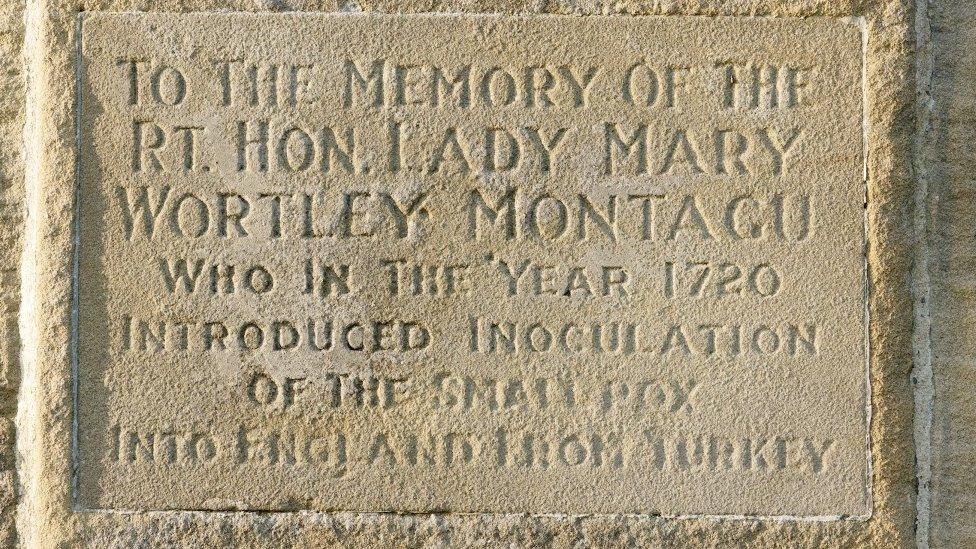Wentworth monument to smallpox pioneer given upgraded status
- Published

Lady Mary Wortley Montagu observed the method of inoculating against smallpox while living in Turkey
The status of a monument dedicated to an aristocrat who saved many lives by introducing smallpox inoculation in Britain has been given an upgrade.
The obelisk at Wentworth Castle Gardens, near Barnsley, recognises Lady Mary Wortley Montagu's contribution to tackling the deadly disease.
The monument's listing has been increased from Grade II to Grade II*.
Sarah Charlesworth, from Historic England, said Lady Montagu was "one of the overlooked heroines" of medicine.
The new listing status has elevated the tribute, known as the Sun Monument, to among the top 10% of England's most important historic sites, the organisation said.
Lady Montagu tested the inoculation on her own daughter and her work in the 1720s paved the way for Edward Jenner to develop a vaccine for the disease.
Ms Charlesworth said: "By introducing inoculation to Britain and championing the practice, she helped to save many lives three quarters of a century before Edward Jenner first tested his smallpox vaccine."

The Obelisk at Wentworth Castle Garden has been elevated to Grade II*
Lady Montagu married Edward Wortley Montagu in 1712 and four years later they moved to Turkey, where she observed local methods of inoculating against smallpox.
This involved scratching the skin and introducing a small amount of the virus taken from the pus of someone with a mild form of the disease.
This, in turn, then provoked a mild form of smallpox which left a lasting immunity.
It is estimated that smallpox caused 60 million deaths between 1700 and 1800.
After she returned to London in 1721 Lady Montagu inoculated her son and daughter and used their immunity to promote the method, which then gained popularity.

The monument has been given Grade II* listed status by the Department for Culture, Media and Sport
The obelisk is believed to have been erected by William Wentworth, second Earl of Strafford, who had met Lady Montagu in Italy as a young man.
The monument's higher listing status was granted by the Department for Culture, Media and Sport on the advice of Historic England.
Torri Crapper, general manager for the National Trust at Wentworth Castle Garden said the team was "delighted that the Sun Monument had received this recognition".
She said Lady Montagu's story was "such an important part of history that deserves to be told".

Follow BBC Yorkshire on Facebook, external, X (formerly Twitter), external and Instagram, external. Send your story ideas to yorkslincs.news@bbc.co.uk, external.
Related topics
- Published29 May 2019

- Published21 September 2018
